TL;DR ... use the DOMParser API
var htmlString = "<html><head><title>Name</title></head><body><div class='content'>Hello</div></body></html>";
var htmlDoc = (new DOMParser()).parseFromString(htmlString, "text/xml");
Unfortunately, there current answers don't hit a lot of edge cases
You should not use $.parseHTML(htmlString) as it's immediately lossy. If we check the source code on $.parseHtml, it'll call buildFragment which creates a temporary DOM element and sets the innerHTML property.

Element.innerHTML provides an API for:
And here's the spec for Html Fragment Parsing Algorithm
Taking a sample string, here's the result of trying various HTML Parsing approaches:
var htmlString = "<html><head><title>Name</title></head><body><div class='content'>Hello</div></body></html>";
function ParseHtmlTests() {
/*** $.parseHTML ***/
var $parseHtml = $.parseHTML(htmlString)
console.LogOutput(
'1. $.parseHTML',
$parseHtml,
$parseHtml.map(function(el, i) { return el.outerHTML }),
$($parseHtml).find("title").text(),
$($parseHtml).find(".content").text()
)
/*** tempDiv.innerHTML ***/
var tempDiv = document.createElement("div")
tempDiv.innerHTML = htmlString
console.LogOutput(
'2. tempDiv.innerHTML',
tempDiv,
tempDiv.outerHTML,
$(tempDiv).find("title").text(),
$(tempDiv).find(".content").text()
)
/*** divAppendContents ***/
var $divAppendContents = $('<div></div>').append(htmlString)
console.LogOutput(
'3. divAppendContents',
$divAppendContents,
$divAppendContents.html(),
$divAppendContents.find("title").text(),
$divAppendContents.find(".content").text()
)
/*** tempHtml.innerHTML ***/
var tmpHtml = document.createElement( 'html' );
tmpHtml.innerHTML = htmlString;
console.LogOutput(
'4. tempHtml.innerHTML',
tmpHtml,
tmpHtml.outerHTML,
tmpHtml.getElementsByTagName('title')[0].innerText,
tmpHtml.getElementsByClassName('content')[0].innerText
)
/*** DOMParser.parseFromString ***/
var htmlDoc = (new DOMParser()).parseFromString(htmlString, "text/xml");
console.LogOutput(
'5. DOMParser.parseFromString',
htmlDoc,
htmlDoc.documentElement.outerHTML,
htmlDoc.documentElement.getElementsByTagName('title')[0].innerHTML,
htmlDoc.documentElement.getElementsByClassName('content')[0].innerHTML
)
}
/*** Create Console Log Methods ***/
console.group = console.group || function(msg) {
console.log(msg)
}
console.groupEnd = console.groupEnd || function(msg) {
console.log("----------------------------")
}
console.LogOutput = function(method, dom, html, title, content) {
console.group(method);
console.log("DOM:", dom)
console.log("HTML:", html)
console.log("Title:", title)
console.log("Content:", content)
console.groupEnd();
};
/*** Execute Script ***/
ParseHtmlTests()
<script src="https://cdnjs.cloudflare.com/ajax/libs/jquery/3.3.1/jquery.js"></script>
And here's the output from the above script in chrome:

The best approach seems to be creating a HTML Root object by setting the innerHTML of a temporary HTML document or by using the DOMParser API
Further Reading:

